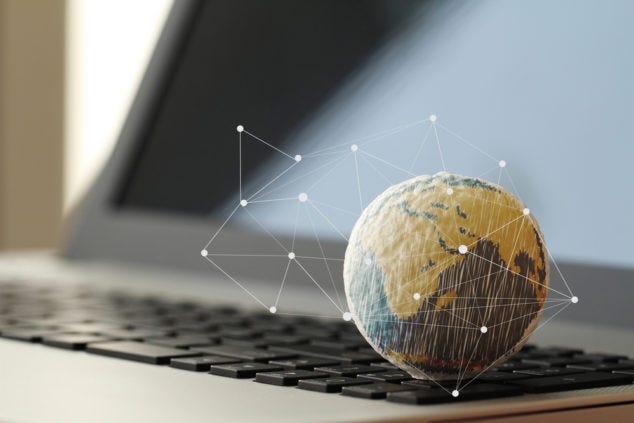The fascinating aspect of technological disruption is its remarkable capacity for both destruction and creation. By marginalizing or even abolishing ways in which people do things in a specific field of activity, new technologies create pervasive conditions for active and enduring resistance against them. On the other hand, by laying the groundwork for new opportunities for social engagement, they also stimulate new thinking and innovative practices that reinforce and sustain them in the long term.
The ability of disruptive technologies to entrench themselves in the society much depends, therefore, on how the balance between the trends and counter-trends that they abruptly unleash is ultimately decided.
This observation may prove particularly valuable for understanding the evolution of digital diplomacy and the extent to which the recent adoption of digital technologies by Ministries of Foreign Affairs (MFA) will be able to substantially change the way in which diplomacy is practiced or whether it will have only a marginal effect on its mode of operation.
Two opposing mega-trends are particularly important to consider when examining the transformative potential of digital technologies on diplomatic relations. The first one actively encourages digital adoption and is driven by the process of rapid acceleration of technological disruption. For example, while it took the telephone 75 years to reach 100 million users worldwide, the mobile phone and its most popular app, Facebook, needed only 16 years and 4 ½ years respectively to pass this milestone. Technological acceleration puts significant pressure on MFAs to develop strong capacities for understanding the potential of digital technologies in their activity and for devising strategies to mainstream and tailor them to short and long-term foreign policy objectives. Failure to do so will expose MFAs to the risk of not being able to maintain their ability to meaningfully influence policy outcomes in the international arena. Three areas are more likely to invite closer scrutiny by MFAs as the rate of technological disruption accelerates:
- From institutional-based to ecosystem approaches: as the success or failure of technological innovations is largely dependent on the quality of the broader ecosystem that supports them, MFAs would need to better understand the technological context in which they operate in order to figure out which digital trends to follow and which not. The 3G mobile technology made possible, for instance, the development and spread of social media networks. The 5G technology, which is due to arrive in just a few years, will likely usher in a whole new level of technological disruption, which could lead to the mass adoption of an entire range of tech tools of high relevance for diplomatic activity, such as augmented reality in public diplomacy or artificial intelligence in consular services.
- From re-action to pro-action: staying ahead of the technological curve will likely require a cognitive shift from following to anticipating and possibly pushing new trends. By swiftly reacting to the rise of social media, MFAs have managed, for instance, to leverage the power of these tools for maximising their role in public diplomacy, crisis communication or diaspora engagement. However, by anticipating new tech trends, they could better operate in an increasingly competitive digital environment by setting rules and standards of digital practice before the others have the chance to do it. Pushing new trends could also prove highly beneficial, as the “first mover” advantage could help digital pioneers secure extra recognition and influence, thus boosting their ‘soft power’ credentials as diplomatic leaders and innovators.
- From centralisation to networks: a dense digital environment with a high rate of technological innovation favours and rewards creativity and experimentation over hierarchy and procedures. This means that in order to adapt more effectively to technological challenges, MFAs would need to relax the constraints underpinning institutional centralization and encourage instead forms and modes of digital interaction tailored to the specific profile of its constitutive diplomatic networks. Diplomatic missions to international organisations would benefit, for instance, from close collaborative efforts aimed at exploring and testing the potential of digital technologies in multilateral contexts. Similarly, embassies and consulates based in conflict-risk regions could share experiences and best practices regarding the use of digital technologies in crisis situations.

The second mega-trend works in the different direction by building resistance against the use of digital technologies. Unlike the case above, where MFAs are concerned about the risk of missing out on potential opportunities created by technological breakthroughs, this counter-driver raises questions about whether the costs of ‘going digital’ may not actually exceed its benefits. Paradoxically, it is the success of digitisation that may plant the seeds for the rise of a powerful counter-trend to MFAs’ efforts to further integrate and institutionalise digital technologies in their work. Emotional contagion, algorithmic determinism and policy fragmentation are three ways in which this counter-trend is more likely to manifest itself:
- From fact-based reasoning to emotional commodification: diplomatic engagement requires a minimum level of shared understanding and mutual openness in order to work. Such possibility arguably dissipates when emotions overwhelmingly frame and dominate the discourse by which opinions are formed online, and when facts are pushed into a secondary or marginal position. When this happens, MFAs end up “preaching to the choir” of sympathetic online followers, failing thus to reach constituencies outside the self-reinforcing “bubble” of like-minded followers.
- From relationship-building to algorithmic broadcast: a significant part of MFAs’ interest in digital technologies lies with their capacities to reach out to online influencers and develop flexible networks of engagement with and across a variety of constituencies. This ability could be severely tested and even compromised by the growing use of algorithms as instruments of conversation monitoring, agenda setting and message dissemination. Recent studies have shown that up to 15 percent of Twitter accounts are in fact bots rather than people, and this number is bound to increase in the future. The moment that AI entities overtake humans in the population of digital users, the possibility of MFAs to develop meaningful relationships with online publics drastically decreases.
- From digital integration to policy fragmentation: It is also important to remind ourselves that digital diplomacy is not supposed to be an end in itself, but rather to serve clearly defined foreign policy objectives. The disruptive character of technological breakthroughs may lead, however, at least in the initial stage, to a decoupling of digital diplomacy from foreign policy. Quick adoption of digital tools without an overarching strategy of how they should be used in support of certain foreign policy objectives is likely to create problems of policy coordination and implementation. The risk for MFAs in this case is to find themselves consuming valuable resources on multiple mini digital campaigns with no clear direction or strategic compass to follow.
To conclude, the future of digital diplomacy lies with the ability of MFAs to exploit the opportunities generated by technological disruption, while guarding itself against the potential pitfalls its early success might create.
If technological acceleration will be seen as an opportunity for ecosystem-based, pro-active, and network-oriented adaptation, then digital diplomacy is likely to penetrate the deep core of the diplomatic DNA.
If, on the other hand, digitization will fail to restrain emotional contagion, algorithmic determinism and policy fragmentation, then MFAs will likely slow down their efforts of integration of digital technologies in their work.
A previous version of this article was included in the 2017 report of the SoftPower30 Index








